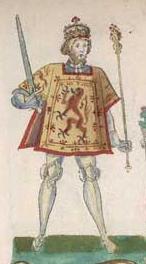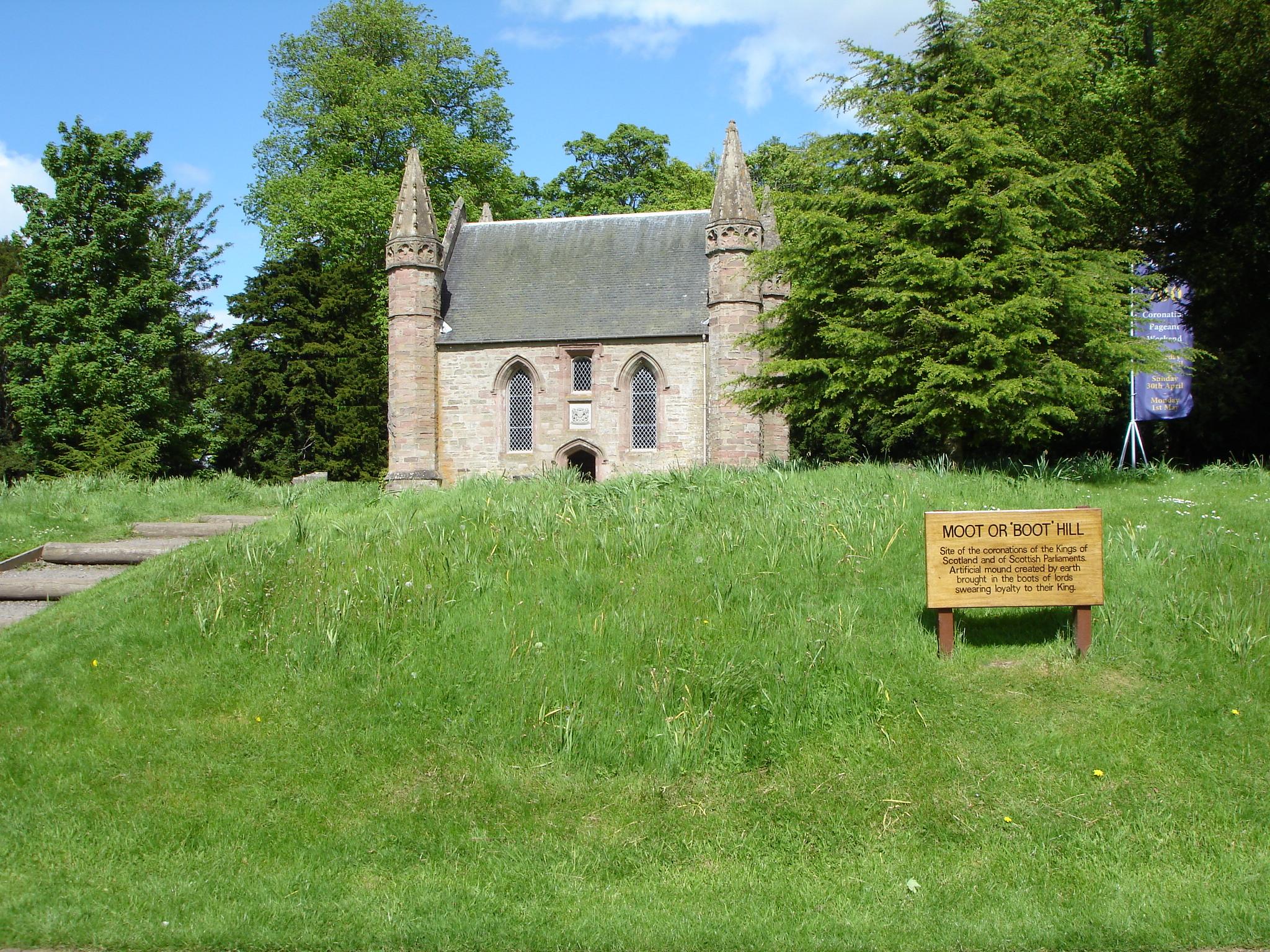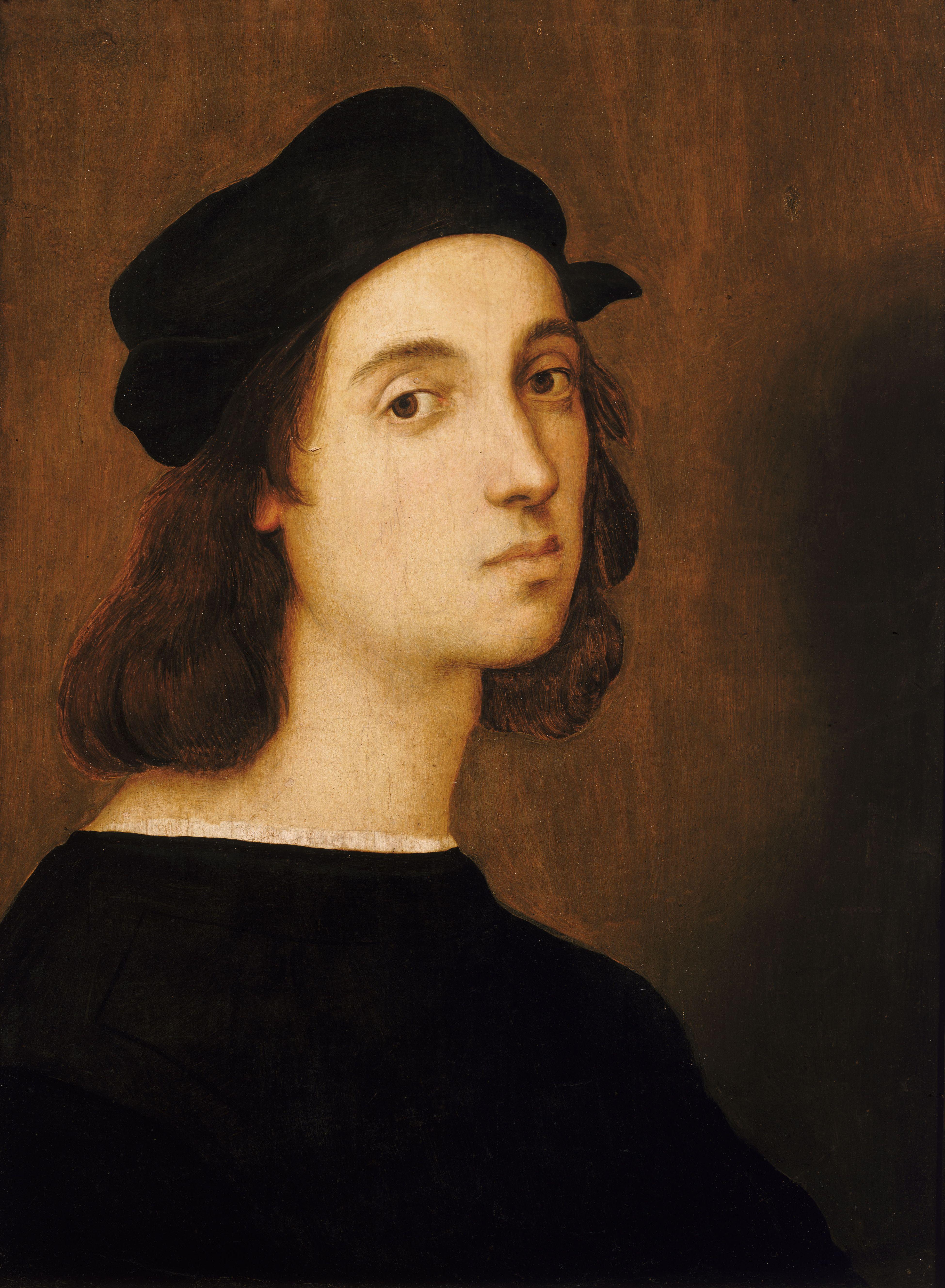|
William Borthwick, 2nd Lord Borthwick
William Borthwick, 2nd Lord Borthwick (died between 6 October 1483 and 7 February 1484) was a Scottish landowner and ambassador to England. He was a son of William Borthwick, 1st Lord Borthwick. Borthwick served as ambassador to England in 1459, his name was included in a safe-conduct or passport of 13 July as "William lord Borthwik" to travel to Newcastle with numerous other nobles, clerics, and a retinue of 200 attendants. On 11 April 1464 he was, with other senior peers, commissioned by James III of Scotland to negotiate with the ambassadors of Edward IV of England to conclude the treaty of York. He sat in parliament on 9 October 1466 and 14 October 1467, and in several subsequent parliaments until his death. Lord Borthwick was one of the Lords of the Articles ''pro baronibus'', in the parliament that sat at Edinburgh on 4 October 1479. In August 1471 he received a safe-conduct with several clerics and other nobles, and a retinue of 400 persons, allowing travel to England as ... [...More Info...] [...Related Items...] OR: [Wikipedia] [Google] [Baidu] |
William Borthwick, 1st Lord Borthwick
Sir William Borthwick, 3rd of Borthwick and later 1st Lord Borthwick (c. 1413 – October 1483) was a Scottish peer and ambassador. Borthwick was the eldest son of Sir William Borthwick, 2nd of Borthwick, castellan of Edinburgh ( Sir William Borthwick of that Ilk), and his wife Bethoc (or Beatrice) Sinclair of Orkney, daughter of Henry Sinclair, 1st Earl of Orkney. He accompanied Henry, Bishop of Aberdeen, William, Bishop of Dunblane, John, Abbot of Melrose, James, Prior of St. Andrews, John, Abbot of 'Balmurynach', Sir William de Hay, knight, Master Thomas de Myrton, Master Edward de Lawedre, and Master John Stenes, all as Scots' ambassadors, with 50 attendants, setting out for the Court of Rome. The Safe-conduct is dated 9 June 1425 and is given until the following Easter. Borthwick was sent in 1424 as hostage in England in the place of James I. He was knighted in 1430 at the baptism of Alexander and James, the twin sons of King James I. In either 1424, 1438 or 12 June ... [...More Info...] [...Related Items...] OR: [Wikipedia] [Google] [Baidu] |
James III Of Scotland
James III (10 July 1451/May 1452 – 11 June 1488) was King of Scots from 1460 until his death at the Battle of Sauchieburn in 1488. He inherited the throne as a child following the death of his father, King James II, at the siege of Roxburgh Castle. James III's reign began with a minority that lasted almost a decade, during which Scotland was governed by a series of regents and factions who struggled for possession of the young king, before his personal rule began in 1469. James III was an unpopular and ineffective king, and was confronted with two major rebellions during his reign. He was much criticised by contemporaries and later chroniclers for his promotion of unrealistic schemes to invade or take possession of Brittany, Guelders and Saintonge at the expense of his regular duties as king. While his reign saw Scotland reach its greatest territorial extent with the acquisition of Orkney and Shetland through his marriage to Margaret of Denmark, James was accused of debasing ... [...More Info...] [...Related Items...] OR: [Wikipedia] [Google] [Baidu] |
Edward IV Of England
Edward IV (28 April 1442 – 9 April 1483) was King of England from 4 March 1461 to 3 October 1470, then again from 11 April 1471 until his death in 1483. He was a central figure in the Wars of the Roses, a series of civil wars in England fought between the Yorkist and House of Lancaster, Lancastrian factions between 1455 and 1487. Edward inherited the House of York, Yorkist claim when his father, Richard, Duke of York, died at the Battle of Wakefield in December 1460. After defeating Lancastrian armies at Mortimer's Cross and Battle of Towton, Towton in early 1461, he deposed King Henry VI and took the throne. His marriage to Elizabeth Woodville in 1464 led to conflict with his chief advisor, Richard Neville, Earl of Warwick, known as the "Kingmaker". In 1470, a revolt led by Warwick and Edward's brother George, Duke of Clarence, briefly Readeption of Henry VI, re-installed Henry VI. Edward fled to Flanders, where he gathered support and invaded England in March 1471; ... [...More Info...] [...Related Items...] OR: [Wikipedia] [Google] [Baidu] |
Treaty Of York (1464)
The Treaty of York (1464) was made between England and Scotland on 1 June 1464 at York and was intended to establish 15 years of peace. Previously Scotland had supported the defeated House of Lancaster in the English civil War of the Roses. Background At the time of the negotiation Alexander Stewart, Duke of Albany and Bishop Spens were prisoners in England. Scottish foreign policy was dominated by Bishop James Kennedy after the death of Mary of Gueldres in December 1463. As practical support from Louis XI of France was unlikely Scotland was forced to abandon its alliance with the House of Lancaster and treat with the Yorkist Edward IV of England. Previously, the Lancastrian Henry VI of England, his wife Margaret of Anjou and son Prince Edward had found refuge in Scotland after the battle of Towton in 1461. Margaret had promised to deliver Berwick upon Tweed and Carlisle to Scotland, but these plans came to nothing permanent beyond the temporary handover of Berwick for twent ... [...More Info...] [...Related Items...] OR: [Wikipedia] [Google] [Baidu] |
Parliament Of Scotland
The Parliament of Scotland ( sco, Pairlament o Scotland; gd, Pàrlamaid na h-Alba) was the legislature of the Kingdom of Scotland from the 13th century until 1707. The parliament evolved during the early 13th century from the king's council of bishops and earls, with the first identifiable parliament being held in 1235 during the reign of Alexander II, when it already possessed a political and judicial role. A unicameral institution, for most of its existence the Parliament consisted of the three estates of clergy, nobility, and the burghs. By the 1690s it comprised the nobility, the shires, the burghs, and various officers of state. Parliament gave consent for the raising of taxation and played an important role in the administration of justice, foreign policy, war, and the passing of a broad range of legislation. Parliamentary business was also carried out by "sister" institutions, such as General Councils or Conventions of Estates, which could both carry out much bu ... [...More Info...] [...Related Items...] OR: [Wikipedia] [Google] [Baidu] |
Edinburgh
Edinburgh ( ; gd, Dùn Èideann ) is the capital city of Scotland and one of its 32 Council areas of Scotland, council areas. Historically part of the county of Midlothian (interchangeably Edinburghshire before 1921), it is located in Lothian on the southern shore of the Firth of Forth. Edinburgh is Scotland's List of towns and cities in Scotland by population, second-most populous city, after Glasgow, and the List of cities in the United Kingdom, seventh-most populous city in the United Kingdom. Recognised as the capital of Scotland since at least the 15th century, Edinburgh is the seat of the Scottish Government, the Scottish Parliament and the Courts of Scotland, highest courts in Scotland. The city's Holyrood Palace, Palace of Holyroodhouse is the official residence of the Monarchy of the United Kingdom, British monarchy in Scotland. The city has long been a centre of education, particularly in the fields of medicine, Scots law, Scottish law, literature, philosophy, the sc ... [...More Info...] [...Related Items...] OR: [Wikipedia] [Google] [Baidu] |
William Borthwick, 3rd Lord Borthwick
Sir William Borthwick, 3rd Lord Borthwick (died 20 May 1503) was a Scottish nobleman, ambassador, and Master of the King's Household in 1485. The son of William Borthwick, 2nd Lord Borthwick (died c. 1483), the 3rd Lord Borthwick was knighted before his father. As Sir William de Borthwick, Knt, he appeared as defender on behalf of his father in an action of debt on 4 July 1476, when judgement was given against him. They appeared again together in an action on 16 October 1479, and this time had a judgement in their favour. He was one of the guarantors of the treaty with England dated 20 September 1484, and a Conservator of other treaties on 26 March 1494, 30 September 1497, and 12 July 1499. William, Lord Borthwick, as superior of the lands of Nenthorn, Berwickshire, granted a charter of them to his second son, Alexander Borthwick, upon the resignation of James Wilson, the previous feuar, on 27 June 1495. Nisbet, Alexander, ''A System of Heraldry'' &c., volume 2, 1722, facsimile ... [...More Info...] [...Related Items...] OR: [Wikipedia] [Google] [Baidu] |
Alexander Nisbet
Alexander Nisbet (bapt. 23 March 1657; died 7 Dec. 1725) was a Scottish lawyer and antiquarian. He is remembered for his works on the subject of heraldry, which are generally considered to be some of the most complete and authoritative ever produced in the British Isles. Life Nisbet was born in Edinburgh, the third of ten children of Adam Nisbet WS and his wife Janet, only daughter of Alexander Aikenhead WS. Adam, and later Alexander, were chiefs of the ancient Nisbet family, of Nisbet in Berwickshire; however, the family had recently lost much of their wealth due to their zealous support of King Charles in the civil war, and had been forced to sell their ancestral estate. In his ''Essay on Additional Figures and Marks of Cadency'', Nisbet remarks that he "had a very early inclination to the study of herauldry, and when a boy ... looked on its figures with wonder, and often wish'd to know their names and signification." Nisbet matriculated at Edinburgh University in 1675, ... [...More Info...] [...Related Items...] OR: [Wikipedia] [Google] [Baidu] |
Lord Borthwick
Lord Borthwick is a title in the Peerage of Scotland. Alexander Nisbet relates that "the first of this ancient and noble family came from Hungary to Scotland, in the retinue of Queen Margaret, in the reign of Malcolm Canmore, ''anno Domini'' 1057. A Thomas de Borthwick is mentioned in a charter of Sir Robert Lauder of Quarrelwood, in the reign of King Alexander II." Sir William de Borthwick of that Ilk was created a Lord of Parliament as Lord Borthwick, (William Borthwick, 1st Lord Borthwick), but it is unclear exactly when the title was created. Nisbet states: "there appears no patent in the records constituting this peerage". Anderson supposes it dates from "about 1424", Brown says 1438, Leeson gives 1452, and Burke's and Pine actually give an exact date: June 12, 1452. However, Alexander Nisbet, writing as far back as 1722 states: "this family was dignified with the title of Lord Borthwick in the beginning of the reign of King James II" which commenced in 1437, which is c ... [...More Info...] [...Related Items...] OR: [Wikipedia] [Google] [Baidu] |
1483 Deaths
Year 1483 ( MCDLXXXIII) was a common year starting on Wednesday (link will display the full calendar) of the Julian calendar. Events January–December * January 1 – The Jews are expelled from Andalusia. * February 11 – The ''General Council of the Inquisition'' is created in Spain. * April 9 – Edward V becomes King of England. * April 29 – Gran Canaria, the main island of the Canary Islands, is conquered by the Kingdom of Castile, a very important step in the expansion of Spain. * April 30 – Pluto moves inside Neptune's orbit until July 23, 1503, according to modern orbital calculations. * April – King Edward V of England and his younger brother Richard, Duke of York reside in the Tower of London. Later this year, rumors of their murders start circulating. By December the rumors have reached France. This is the beginning of the mystery concerning the fates of the two Princes in the Tower. * June 13 – William Hastings, 1st Baro ... [...More Info...] [...Related Items...] OR: [Wikipedia] [Google] [Baidu] |
Lords Of Parliament (pre-1707)
A Lord of Parliament ( sco, Laird o Pairlament) was the holder of the lowest form of peerage, entitled as of right to take part in sessions of the pre-Union Parliament of Scotland. Since that Union in 1707, it has been the lowest rank of the Peerage of Scotland, ranking below a viscount. A Lord of Parliament is said to hold a ''Lordship of Parliament''. Details The peerage of Scotland differs from those of England and Ireland, in that its lowest rank is not that of baron. In Scotland, the term "baron" refers to a feudal baron, considered to be a minor lord who is not a peer, approximately equal to a baron in some continental countries. The Scottish equivalent to the English baron is the Lord of Parliament. A male holder of such a lordship is designated a "Lord of Parliament," while there is no similar designation for female holders. Lords of Parliament are referred to as ''Lord X'', while female holders of Lordships of Parliament are known as ''Lady X''. The wife of a Lord of ... [...More Info...] [...Related Items...] OR: [Wikipedia] [Google] [Baidu] |
Ambassadors Of Scotland To England
An ambassador is an official envoy, especially a high-ranking diplomat who represents a state and is usually accredited to another sovereign state or to an international organization as the resident representative of their own government or sovereign or appointed for a special and often temporary diplomatic assignment. The word is also used informally for people who are known, without national appointment, to represent certain professions, activities, and fields of endeavor, such as sales. An ambassador is the ranking government representative stationed in a foreign capital or country. The host country typically allows the ambassador control of specific territory called an embassy, whose territory, staff, and vehicles are generally afforded diplomatic immunity in the host country. Under the Vienna Convention on Diplomatic Relations, an ambassador has the highest diplomatic rank. Countries may choose to maintain diplomatic relations at a lower level by appointing a chargé d'af ... [...More Info...] [...Related Items...] OR: [Wikipedia] [Google] [Baidu] |
.jpg)






.jpg)